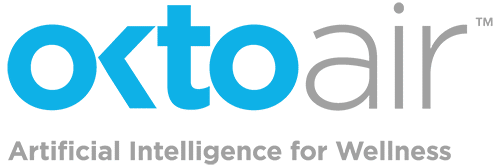Philip Dowds, Managing Director of OKTO Technologies examines the impacts of indoor air pollution on employees and discusses why the time is now to embrace forward looking technologies that optimise employee wellbeing.
As offices and workplaces are set to re‑open in growing numbers in the coming months, business leaders and employees will hope they can navigate the road to Covid‑19 recovery with confidence. In order to minimise the spread serial number active nitro pro 10 of Covid‑19 and instil trust in employees returning to the office, it is imperative that employers and building managers now focus on controlling air pollution in indoor workspaces.
Learn More About Our Commercial Air PurifierA British Medical Journal editorial [1] published last month highlighted the importance of reducing airborne transmission indoors to help stay safe from the virus. The team of scientists examined how SARS‑CoV‑2 particles can behave like a cloud of exhaled smoke, being most concentrated at ‘short range’ distance of under one metre. However, particles dispersed over longer distances of over two metres can linger in the air for hours, posing risks to those exposed even after the original source has left. This risk is of course at its highest in indoor environments which lack proper ventilation. All guidance from health authorities, such as the World Health Organisation, advises enhancing ventilation through HEPA‑type filtration which offers maximum efficiency in sterilising air, and it is clear the time is now to improve ventilation and air quality in workspaces.
In order to ensure businesses operate safely and keep the economy moving, employers must guarantee that workspaces offer diluted air that filters out toxic pollutants and viruses, especially as much of the workforce remains unsure of returning to workplaces after the pandemic. Employees want reassurance, they need peace of mind, and they expect clean air in the office. With proper air quality management systems in place, employees will have the assurance that they can securely and happily return to work with a far‑minimised risk of Covid‑19 infection. For example, by using advanced sensor technology to monitor the indoor and outdoor air quality in real time, businesses can automate adjustments to airflow and ventilation rates as require, increasing virtual air changes per hour in order to keep staff as protected as possible.
However, air quality improvements in workspaces would have far‑reaching benefits well beyond just mitigating the impacts of coronavirus. Harvard University has carried out studies [2] on the impact of improved indoor air quality in workspaces, finding that high‑performing, green certified buildings resulted in far greater productivity and health outcomes for employees. In 2015, the research found that improving the ventilation of office buildings improved the performance of workers by 8 per cent, equivalent to a 6,500 US dollar increase in employee productivity Software each year. Analysis of sick leave data also found that 57 per cent of all sick leave was due to poor ventilation. Additionally, polling carried out in the UK [3] has demonstrated the impact that healthy buildings have on workers, with 49 per cent of respondents saying the healthiness of their work impacts their productivity.
It has been widely discussed how the pandemic has shown us pathways to more productive work environments, particularly as home working and flexible work patterns have become much more widespread. However, air quality management is a significant and often overlooked area that will boost employee happiness and productivity without the need for extensive changes in ways of working.
Learn More About Building VentilationAs well as improvements in cognitive function, increases in activity and minimised Covid‑19 risk, enhanced workspace ventilation can offer further health benefits for employers looking to safeguard their staff, reducing sick leave for other airborne or environmental illnesses such as flu, allergies and sick building syndrome. Reductions in workplace illnesses and absences would further boost business productivity and save on significant costs caused by these issues. The long‑term savings made through productivity boosts and reductions in absenteeism are likely to far outweigh the costs of maintaining effective air quality management systems.
Now is the time for businesses to embrace forward‑looking technologies with direct benefits for employee wellbeing. Not only will these help companies and workers return to workspaces with increased confidence to get our economy moving again, but they will bring about the long‑term benefits of a happier, more productive workforce. Ensuring people can work in safe, clean environments with proper air filtration is an important step towards a strong economy and a healthy, happy society as we come out of the pandemic.
Learn More About HEPA Air Purifier1: https://www.bmj.com/content/373/bmj.n913
2: https://www.sciencedirect.com/science/article/pii/S0360132316304723 and https://pubmed.ncbi.nlm.nih.gov/26593933/
3: https://www.infogrid.io/healthy‑buildings‑report
Reposted from https://www.fmuk-online.co.uk/features/1512-cleaner-air-means-happier-workers-the-links-between-productivity-and-clean-air

